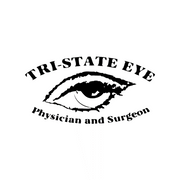Middletown’s Eye Care Experts Explain Types of Cataracts

The caring team at Tri-State Eye believe that when patients are informed, they’re better able to look out for signs of any potential eye issues that may arise. Their caring team wants to give their patients every opportunity to keep their eyes safe and healthy, including remaining vigilant for cataracts.
Here, the Tri-State Eye doctors provide some useful information about the ways in which cataracts are classified:
-
Location: It’s possible for cataracts to occur in the nucleus of the eye (the center area of the lens) or the cortex (the area between the center and outer lens). These two different types of cataracts are referred to as nuclear cataracts and cortical cataracts, respectively. It’s also possible for a person to contract a subcapsular cataract, in which the outer lens, or capsule, is affected.
-
 Cause: Oftentimes, cataracts are brought on by age. Sometimes, age-related cataracts are called “senile cataracts,” and they often develop in the nucleus. If cataracts are developed at a young age, they’re typically found in the rear region of the capsule.
Cause: Oftentimes, cataracts are brought on by age. Sometimes, age-related cataracts are called “senile cataracts,” and they often develop in the nucleus. If cataracts are developed at a young age, they’re typically found in the rear region of the capsule. -
Degree Of Cloudiness: Any degree of blurriness in the eye’s lens is referred to as a cataract. Depending on the severity, a cataract will be classified as mild, moderate, or severe. A cataract that is completely opaque is commonly referred to as a “mature” cataract; any cataract that isn’t entirely opaque is considered “immature.”
The doctors at Tri-State Eye specialize in cataract surgery and can even perform laser eye surgery to remove cataracts in a non-traumatic manner. With two convenient locations in Middletown, NY, and Milford, PA, each skilled, experienced eye doctor on the team is glad to serve patients all throughout the tri-state area. To set up an appointment with Tri-State Eye, call (845) 703-2020, or visit them online for more information.
About the Business
Have a question? Ask the experts!
Send your question

